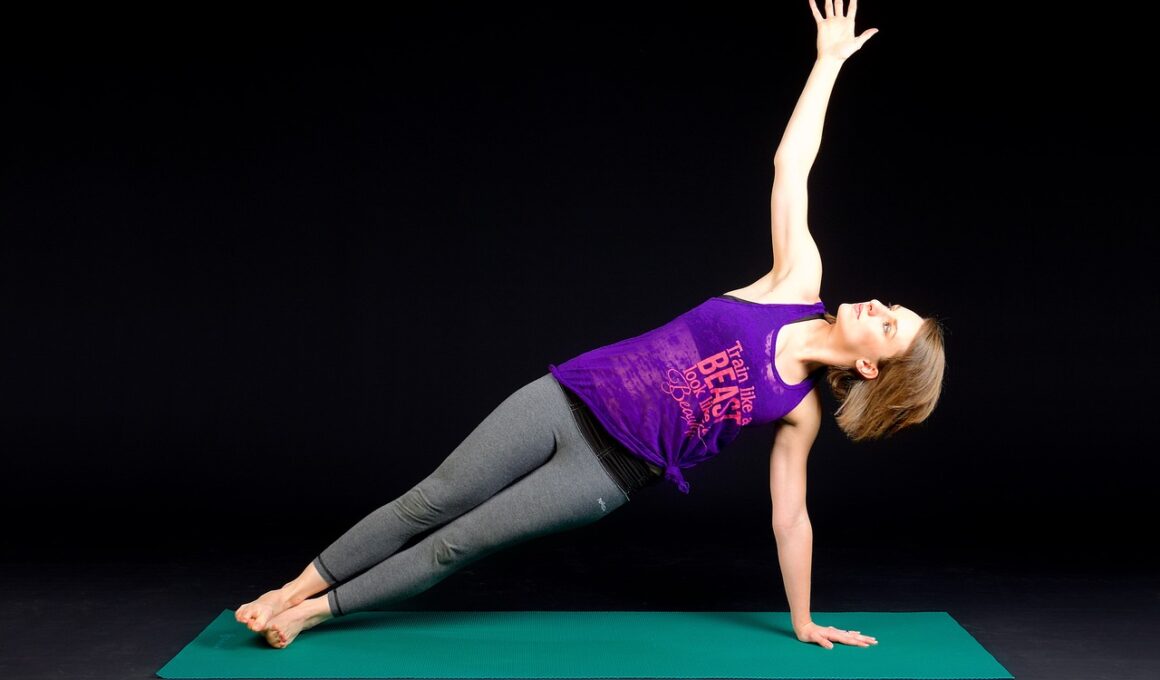Core Strength and Posture: Exercises That Make a Difference
Core strengthening is foundational for enhancing overall fitness and fostering proper posture. The core is not simply about the abdominal muscles; it comprises a system of muscles around the torso, including the back and pelvis. Strengthening these muscles can lead to improved balance, stability, and efficiency in other physical activities. Effective core exercises can also mitigate risks of back pain, which is a common concern for many individuals. With a robust core, daily activities become easier, and athletic endeavors can be performed more effectively. By emphasizing core strength, one can ensure a better alignment of the spine and pelvis, resulting in improved posture. Posture impacts various aspects of life, from confidence to the body’s internal functions, like breathing and digestion. Committing to core strength exercises plays a significant role in achieving both functional strength and aesthetic goals. This article will delve deeper into various types of core exercises that help cultivate these benefits. Each exercise can be tailored to individual needs, making them versatile for different fitness levels and lifestyles.
Benefits of Core Strengthening Exercises
Engaging in core-strengthening exercises offers numerous advantages beyond just aesthetic appeal. A stronger core supports better posture, reducing strain on the spine and joints. This improvement in posture often alleviates discomfort associated with prolonged sitting or standing, which many people experience in today’s sedentary lifestyle. Moreover, a solid core enhances athletic performance by contributing to greater efficiency and power in movements, such as running, jumping, or lifting. In addition to physical benefits, individuals often report increased confidence as their body aligns correctly, positively impacting their mental health. Furthermore, core exercises contribute to better balance and stability, crucial for preventing falls and injuries, especially in older adults. They also play a vital role in rehabilitative practices, aiding recovery from injuries by progressively challenging affected muscles. An effective core workout can be integrated into various fitness routines or be performed independently, catering to all fitness levels. With weight gain and chronic pain on the rise, investing time into core training is a practical approach to promote long-term health and fitness.
There are numerous types of core exercises that cater to different fitness levels and goals. For beginners, basic exercises such as planks and bridges can help establish a solid foundation. These movements involve not only the abdominal muscles but also engage the back, glutes, and shoulders, fostering a holistic approach to core training. As individuals become more comfortable, they can progress to intermediate exercises like Russian twists and bicycle crunches, which introduce rotational movements to enhance flexibility and strength. Advanced practitioners may incorporate dynamic exercises, such as hanging leg raises or stability ball rollouts, to challenge their core while also increasing endurance. Each type of exercise provides unique benefits, reinforcing the importance of variety in workouts. Additionally, integrating breathing techniques during these exercises can further amplify core engagement and stability. Balanced nutrition is also essential, as building muscle alongside losing fat can significantly improve one’s appearance and health. It’s crucial to perform these exercises with proper form to prevent injuries and maximize results. Setting achievable goals and tracking progress through a fitness journal can keep individuals motivated along their core-strengthening journey.
Planks: The Foundation of Core Strength
One of the most effective core exercises is the plank, which engages multiple muscle groups simultaneously. The plank primarily targets the abdominal muscles, but it also activates the shoulders, back, and even the glutes. Various plank variations can be introduced to keep the practice dynamic and challenging. For beginners, a standard elbow plank is a great starting point, ensuring the body forms a straight line from head to heels. As strength develops, individuals can try side planks, which focus on the obliques, or add movement, such as plank jacks or shoulder taps, to increase intensity. Whether held for 20 seconds or longer, the plank is effective for building endurance and strength in the core. Consistent practice improves not only muscle tone but also stability and posture. Including planks in a workout routine can yield significant benefits when performed with good technique and regular progression. It’s important to listen to the body and avoid straining during holding periods; rest can be as valuable as performance. By prioritizing planks, individuals can lay a strong foundation for more complex core exercises.
Bridges: Enhancing Glute and Core Connection
Bridging is another effective core exercise that emphasizes the connection between the glutes and core muscles. The bridge exercise helps stabilize the pelvis and strengthens the lower back, contributing positively to overall core health. Lying on the back with knees bent and feet flat, practitioners lift their hips, creating a straight line from knees to shoulders while tightening the abdomen. This motion not only assists in engaging the core but also targets the glute muscles, which are often neglected in traditional exercises. Bridges can be modified by incorporating single-leg variations or by placing weights over the hips for additional resistance. Regular practice of bridge exercises promotes better alignment of the spine while also boosting balance and strength necessary for daily activities. Having robust glute muscles can also reduce stress on the lower back, ideally preventing discomfort and facilitating better movement patterns during other exercises. Moreover, bridges can easily be integrated into various fitness routines, making them a versatile option for individuals looking to improve their core strength and stability.
Incorporating rotational movements into core workouts can significantly enhance strength and functional fitness. These movements engage different portions of the abdominal muscles, particularly the obliques, which are often underutilized in standard exercises. Russian twists are a popular choice, wherein individuals sit on the ground, engage their core, and rotate their torso from side to side while holding a weight or medicine ball. This action mimics movements encountered in many sports, making it a practical addition to training routines. Another effective rotational exercise is the medicine ball slam, which combines power with core engagement. Such exercises are not only effective in building strength but also in improving coordination and agility. Integrating these rotational exercises can keep training sessions exciting and prevent monotony, which can lead to disinterest in fitness. It’s crucial, however, to focus on control and precision rather than speed, as poor form can lead to injury. By prioritizing functional movements in core workouts, individuals can enhance their performance in everyday tasks and other physical activities, leading to a more active lifestyle.
Conclusion: Fostering a Healthy Core
Developing a strong core is essential for anyone seeking to improve their overall fitness and posture. The exercises discussed—planks, bridges, and rotational movements—represent only a small fraction of the wide array of options available for core strengthening. The importance of engaging the core cannot be overstated, as a healthy core impacts body mechanics and overall health. Establishing a consistent exercise routine that includes these core movements is an investment in future well-being. Finding supportive communities or fitness classes dedicated to core training can also provide motivation and encouragement. Furthermore, these exercises can be modified for all fitness levels, making them accessible to everyone. Ultimately, prioritizing core strength can lead to profound improvements in physical and mental health, promoting a well-rounded lifestyle. Striving to maintain proper form while challenging oneself will ensure steady progress. As people nurture their core strength, they not only enhance their physical appearance but pave the way for a more confident and active life. By emphasizing core health, individuals can enjoy greater independence and resilience.
Core strengthening exercises form the bedrock of overall fitness and improved posture. The human core encompasses more than just the abdominal muscles; it includes a complex network of muscles around the torso, such as the back and pelvic muscles. When these muscles are strengthened, individuals experience enhanced stability, increased balance, and overall higher efficiency in physical activity. Furthermore, effective core workouts can greatly reduce the chances of developing back pain, a common issue for many people. By focusing on core strength, individuals can also ensure better alignment of the spine and pelvis, positively impacting their posture. This article delves into various core strengthening exercises that are effective in cultivating these benefits. Each exercise serves a unique purpose and can be adapted to suit different fitness levels and individual needs. Building a strong core can vastly simplify everyday tasks and improve performance in physical activities, whether they engage in competitive sports or wish to stay active throughout their lives. As individuals enhance their core strength, they also promote better physical health and well-being across their lives, making this pursuit critical for anyone seeking overall fitness.


